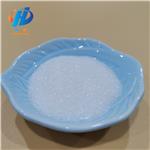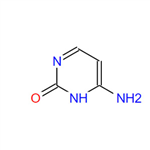- Inosine
-

- $10.00/ kg
-
2024-04-24
- CAS:58-63-9
- Min. Order: 1kg
- Purity: 99.8%
- Supply Ability: 10000ton
- Inosine
-

- $0.00 / 1KG
-
2024-03-16
- CAS:58-63-9
- Min. Order: 100g
- Purity: 98%+
- Supply Ability: 100kg
- Inosine
-

- $0.00 / 1kg
-
2024-02-06
- CAS:58-63-9
- Min. Order: 1kg
- Purity: 99%
- Supply Ability: 20ton
|
| | Inosine Basic information |
| | Inosine Chemical Properties |
| Melting point | 222-226 °C (dec.) (lit.) | | alpha | -49.2 º (c=1,H2O 18 ºC) | | Boiling point | 226 C (dec.) | | density | 1.3846 (rough estimate) | | refractive index | -52 ° (C=1, H2O) | | storage temp. | Keep in dark place,Sealed in dry,Room Temperature | | solubility | H2O: 0.5 M, clear, colorless | | pka | 13.24±0.70(Predicted) | | form | Crystalline Powder | | color | White | | Odor | Odorless | | Water Solubility | 2.1 g/100 mL (20 ºC) | | Merck | 14,4975 | | BRN | 624889 | | Stability: | Hygroscopic | | InChIKey | UGQMRVRMYYASKQ-PKJMTWSGSA-N | | LogP | -1.970 (est) | | CAS DataBase Reference | 58-63-9(CAS DataBase Reference) | | NIST Chemistry Reference | Inosine(58-63-9) | | EPA Substance Registry System | Inosine (58-63-9) |
| Hazard Codes | Xi | | Risk Statements | 36/37/38 | | Safety Statements | 24/25-36-26 | | WGK Germany | 2 | | RTECS | NM7460000 | | F | 10 | | TSCA | Yes | | HS Code | 29389090 | | Toxicity | LD50 oral in rat: > 10gm/kg |
| | Inosine Usage And Synthesis |
| Chemical Properties | White crystalline powder | | Originator | Foreart,Guarnieri,Italy,1970 | | Occurrence | Inosine is a synthetic | | Uses | Suppresses the increase of glucose and insulin in the blood | | Uses | cell function activator, cardiotonic | | Uses | Inosine has been used:
- as a medium supplement in nucleotide rescue experiments in pancreatic cancer cell lines.
- as a component in holidic (synthetic) medium and in larval two-choice preference assay.
- as a reference standard in mass spectroscopy.
| | Uses | Has neuroprotective properties improving axonal wiring. Has been used to treat stroke patients to restore neural function. | | Definition | ChEBI: A purine nucleoside in which hypoxanthine is attached to ribofuranose via a beta-N9-glycosidic bond. | | Manufacturing Process | As described in US Patent 3,049,536, inosine may be prepared starting with
adenosine.
The Deamination of Adenosine: 20 g of adenosine are dissolved in one liter of
water by warming, and after cooling to room temperature 120 g of barium
nitrite (monohydrate) are added to the solution. Under stirring there is added
in time intervals of one hour 160 cc of 2 N sulfuric acid after each time
interval. After the third addition, the reaction mass is allowed to stand for 3
hours at room temperature. The solution is then tested for barium, and if
some barium is still present a slight excess of sulfuric acid is added. 300 cc of
methanol is then added. In order to drive off the excess of nitrous acid, CO2 is
conducted through the solution until the solution is free of nitrous acid as
determined by testing with potassium iodide-starch paper. The precipitated
barium sulfate is separated by centrifugation. The residue is washed one time
with about 500 cc of water. The total volume of the centrifugate is about 2.3
liters.
Isolation of Inosine by Ion Exchange Method: Half of the above clear
centrifugate (1.15 liters) is treated with 250 cc of anion exchange
(bicarbonate form) and stirred together therewith for 16 hours at room
temperature. The pH value is increased thereby to about 4 to 5. The ion
exchanger is filtered off under suction and washed 3 times, each time with
150 cc of water. The solution is brought to a pH value of 7 by means of
normal sodium hydroxide (total volume of the solution about 1.55 liters), and
concentrated to a volume of about 100 cc under vacuum.
The inosine is crystallized overnight in an ice box and the inosine is then
filtered off by suction, washed with a small amount of ice water and dried at a
temperature of 105°C. A first fraction of crude inosine consisting of 5.4 g
having a purity of 99% is obtained. Further fractions of crude inosine are
obtained from the mother liquid by concentration, the total amount
constituting 3.2 g having a purity of 96 to 98%. The yield of crude inosine is
8.6 g which is equal to 86%.
Recrystallization of the Crude Inosine: 17.0 g of crude inosine are dissolved in
400 cc of 80% ethanol in a water bath, filtered while hot and brought to
crystallization in an ice box. After standing overnight the crystalline material is
filtered off under suction and washed with ice water. The pure inosine is dried
in a drying chamber at a temperature of 105°C. The yield of pure inosine is
15.0 g which is equal to 75%. The yield can be further increased by workingup the mother liquor of the crystallization as set forth above.
Alternatively, inosine may be made by fermentation as described in US Patent
3,111,459. 3 ml portions of a culture medium consisting of glucose (5 g/dl),
ammonium chloride (0.4 g/dl), urea (0.4 g/dl), KH2PO4 (0.1 g/dl), MgSO4 ·
7H2O (0.02 g/dl), Mn++ (2 ppm), Fe++ (2ppm), casein hydrolyzate (0.2 g/dl),
yeast extract (0.2 g/dl), corn steep liquor (0.2 ml/dl), polypeptone (0.1 g/dl),
meat extract (0.1 g/dl) and sodium ribonucleate (10 mg/dl) were poured into
respective test tubes and each tube was sterilized at 115°C for 10 minutes.
Thereafter separately sterilized calcium carbonate was added in the amount of
2 g/dl and then cells of Bacillus subtilis S26910 were inoculated into the
above media and cultured with shaking at 30°C for 20 hours.
The resulting culture liquids were utilized for seeding, 20 ml of the medium
having the composition described above were poured into a 500 ml shaking
flask and sterilized at 115°C for 10 minutes and five drops of the above seed
were added, and then cultured with shaking at 30°C for 65 hours. Thereafter
0.15 g/dl of inosine were accumulated.
The inosine-containing solution, which was obtained by separating the cells
from the resulting fermentation liquid, was treated with both decolorizing
resins and anion exchange resins by means of a conventional method and
then acetone was added to crystallize the inosine. 1.47 g of the crude crystals
of inosine were obtained from 3.5 liters of the culture liquid containing 1 g of
inosine per liter. | | Therapeutic Function | Cardiotonic | | General Description | Inosine is a non-canonical nucleotide majorly present as monophosphate. It has ability to base pair with deoxythymidine, deoxyadenosine and deoxyguanosine. Incorporation of inosine in place of guanine modulates translational events. Inosine has antioxidant, anti-inflammatory and neuroprotective functionality. Inosine is prescribed as a therapeutic supplement for nerve injury, inflammation and oxidative stress. It modulates biological processes through adenosine receptors. Its enhances neurite outgrowth in depressive disorders via adenosine receptors. Inosine is also used for treating sepsis in infections. | | Biochem/physiol Actions | Inosine is a potent stimulator of nerve growth factor (NGF) induced neurite outgrowth. The elevated levels of inosine in brain following injury are associated with the increased expression proteins related to axonal regeneration and growth. Mice given inosine demonstrated enhanced recovery of fine motor control following ischemic brain damage. Inosine may be used in studies of the process A-to-I RNA editing. | | target | NF-kB | SOD | PKA | AChR | PKC | Calcium Channel | | Purification Methods | (-)-Inosine forms anhydrous crystals from aqueous 80% EtOH but the dihydrate from H2O. [Beilstein 31 H 25, 26 III/IV 2087.] |
| | Inosine Preparation Products And Raw materials |
|